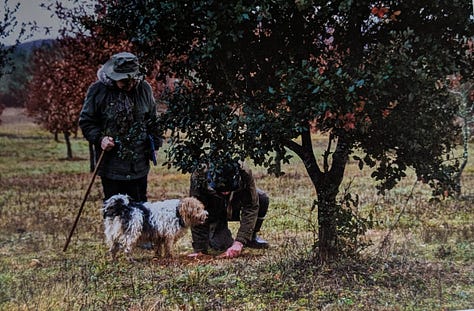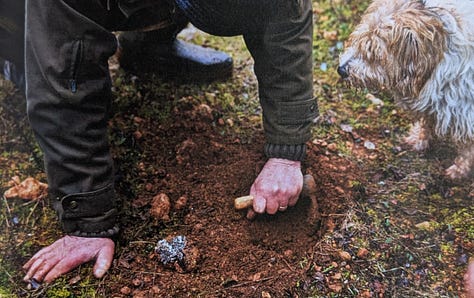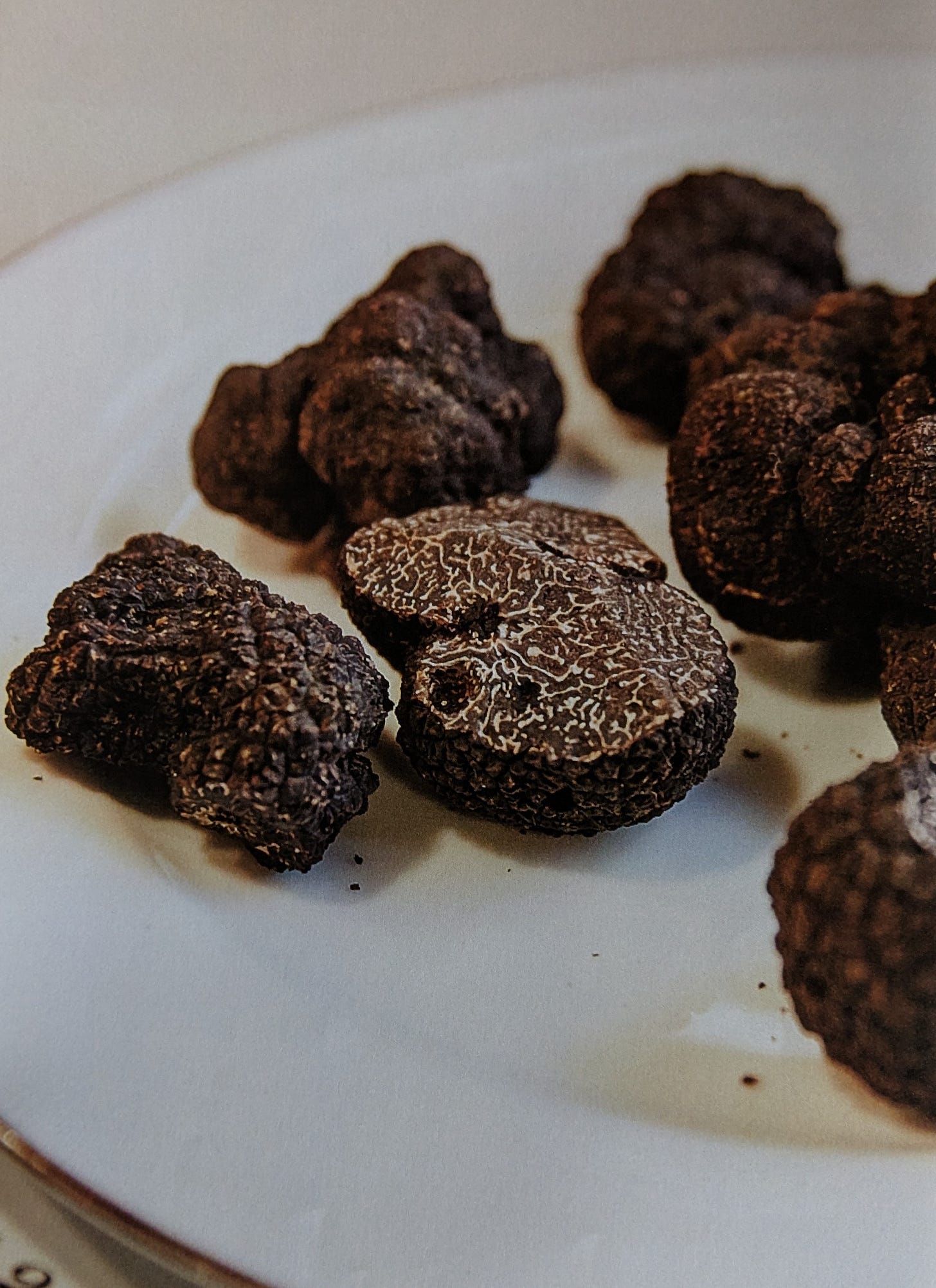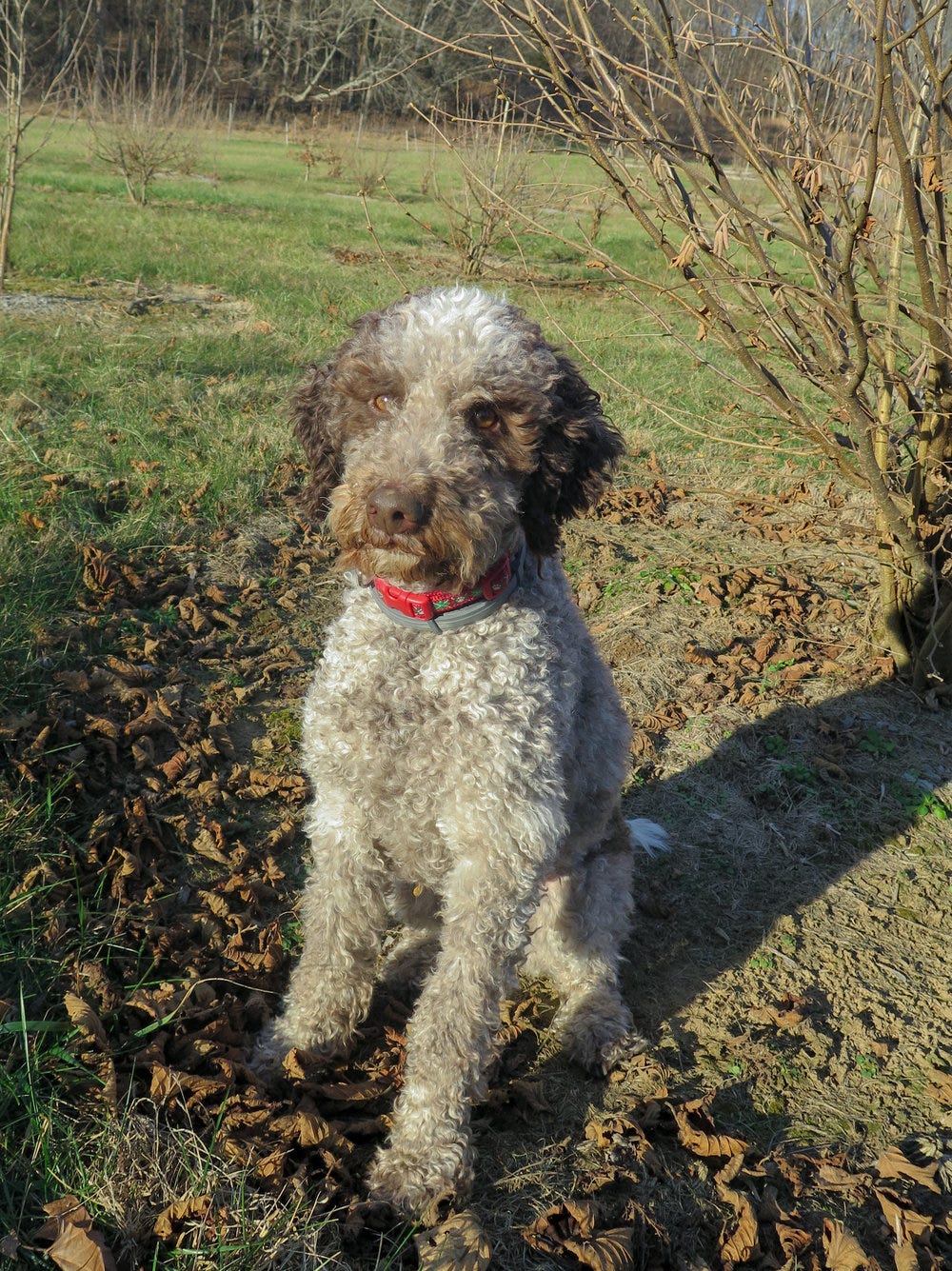Depending on the adjectives used to describe it, manufactured food has its supporters and its detractors. Swop ‘manufactured’ for processed, synthetic, counterfeit, fake, ersatz, each of which it means, and you’re likely to raise hackles. Less so if you substitute ‘mock’ (as in mock turtle soup, for example), or imitation or man-made or cultivated. These somehow suggest more honesty, a laying of cards on the table.
Semantics are a problem that has bedevilled creators of plant-based foods designed to replicate meat. (I’ve never quite understood this development: why bother? Why take the protein of plants to create, for instance, a sausage that looks like it has passed very slowly through a dog, and not just eat the delicious satisfying original vegetable?)
But when the foodstuff is a luxury, we question less how it came to be, whether it was ‘developed’ by being ‘farmed’, like caviar, or salmon for smoking over fancy woods. Or, in this case, the truffle.
Obviously, a truffle, any more than caviar, isn’t ersatz in any way. The rare edible underground fungus is a genuine product of Nature. But as well as being found in the wild by people with guardian angels, in southwest France the truffle is ‘cultivated’ for a supply greater than Nature can manage. Even so, it’s still chronically expensive.
But it may soon become more affordable.
Two new species of truffle have been unearthed in the wild in the Appalachian Mountains of the USA. Which is an unwelcome challenge to the people of the Périgord, as the Dordogne is known, home of the ‘Black Diamond’ Tuber melanosporum. The majority are not found in the wild but ‘cultivated’ (a verb which, not entirely correctly, is given as a synonym for ‘manufactured’). To create them, the roots of holm oak saplings are inoculated with truffle spores.



The market for the truffles of the Périgord is currently worth around £4364/$5496 a kilo.
It is significantly cheaper than the truffle from Alba, prime site of Italy’s golden white truffle. This season’s Tuber magnatum sells in Alba at £5250/$6612 a kilo. I am too unreliable with maths to work out the cost of 50 grams, just under 2 ounces, at that price. But one online site sells 50g for €2837.12/$2,977.98 which is beyond extortionate.
The price difference between the Périgord and the Alba truffle is because the Piedmont variety is never cultivated but only found in the wild.
With the unearthing of the American wild truffle, the truffle hunters of both European regions are feeling ruffled. The implication of the American discoveries is that they will push down the truffle’s market price.
According to aficionados who’ve tasted them, the Appalachian truffles measure up very successfully to the European varieties, though one type has an intense garlic smell. While both the French and Italians are liberal in their use of actual garlic in their cooking, they protest that it has no place in any fashion in a truffle. The French don’t even want to entertain the suggestion that the Italian truffle is better than theirs, so the American truffle has little hope of gaining Gallic respect.
We punters who can’t afford truffles from Italy or France, should raise a cheer for Tuber canirevelatum, the ‘dog-found truffle’ named for truffle-hound Monza, who discovered it in the Appalachians. The other truffle, Tuber cumberlandense, was dug up by truffle hound Luca in the Cumberland Plateau in the Kentucky end of the mountains.
Both hounds were trained by women, if you’re interested, for a team from Michigan University and the University of Florida. The worry for the Europeans whose livelihood is linked to the availability of the truffle is that, university research being costly and in constant need of topping up, commercial cultivation of these two wild American tubers is likely to follow. The truffle’s exclusivity is lessened if even your local pizzeria can afford to stick them on their menu.
Until the America truffles hit the global market, you will have to depend on the two European varieties. There is a difference between them, and not just in an intensity of flavour that renders the Italian truffle the more valuable. A French truffle is hard. Once it turns soft, it’s well past its best. The Italian one, on the other hand, is spongey from the get-go. Both of them smell pungently of unwashed underwear, though gourmets prefer to compare them to the scent of damp forests which is where wild truffles are found, in the soil a few inches under oaks and hazelnuts and chestnuts.
One belief has it that truffles go back at least 150 million years, starting as an above-ground mushroom, then going underground to escape the heat by insulating themselves in the soil. As animals evolved, truffles were dug up and eaten by burrowing animals like the wild boar which spread the truffle’s spores through their feces. It’s a nice conceit but hard to find any solid evidence to back it.
Records of truffles first appear in 2 BC, in neo-Sumerian inscriptions disparaging the eating habits of their enemy, the Amorites. Still, they were eaten not just by the Amorites but by every culture from the Babylonians to the Romans. But none of them seem sure how they grew. Plutarch and Juvenal thought they were the result of lightning hitting the ground. Cicero referred to them as the children of the earth. More informed, Greek physician Dioscorides, who lived much later, around 40-90 AD, produced a 5-volume encyclopedia on medicinal plants, said, a little dismissively, they were just tuberous roots.
Truffle hunting was recorded by the papal historian Bartolomeo Platina in 1481, the pigs of the Piedmont noted as without equal in their ability to find them. The pigs' voracious habit of eating them was not so well appreciated.
It was only during the Renaissance that Francis I, the king of France from 1525 to 1547, brought them to prominence, celebrating them at his court feasts. By the 1780s, they were sent up to Parisian markets from the Périgord, where they had long been a treat among the peasantry and their feudal overlords. They were rare enough that 18th century gastronome Brillat-Savarin remarked they were so expensive that only the nobility and courtesans could afford to serve them.
Truffle cultivation is relatively recent. Legend has it that one day in 1810, Joseph Talon, a farmer in southeastern France was taking his pig for a walk as one does, when the creature stampeded off. It halted under an oak tree and began to dig as though possessed until it found what had drawn it. Monsieur Talon snatched whatever it was from its mouth before it killed his precious animal. And discovered the lump was a black truffle, a luxury available only to the wealthy.
From then on, the pig found several truffles a day. Talon noticed they were all unearthed from under oak trees. He buried some of their acorns near where the truffles had been found and waited. It takes at least eight years to produce a truffle, but he was patient. His eventual harvest was impressive enough, regular enough, and valuable enough to attract too much interest. In due course his secret was revealed and copied. And truffle cultivation (‘manufacture’? ‘processing’?) began.
To get the most you can from very little, turn some into a truffle butter that you can freeze and serve in slices over grilled steak or a steamed fish whenever you want: mash 70g/2½ oz of grated truffle into 250g/8oz of softened butter. Roll into a log, wrap extra-well in greaseproof paper then a freezer bag and slice off what you require with a knife you’ve heated in boiling water.
If you want to celebrate the truffle, make a Crème Brûlée aux truffes - the day before you want to eat it. (Don’t leave out the sugar - it isn’t incongruous.) It’s your regular crème brûlée recipe but with a little truffle grated into the cream before you bring it slowly to a frizzle round the edges of your pan, to flavour it.
Serves 4
570ml/2⅓ cups double/heavy cream
1 truffle
1 teaspoon salt
4 large egg yolks
2 tablespoons superfine sugar
Grate enough truffle into the cream in a small pan to flavour it and bring to scalding point. Beat the salt into the yolks then slowly dribble the hot cream onto them, beating all the while. Pour this into a heatproof bowl and set it above a pan of simmering water. Keep stirring the cream mixture until, once it coats the back of your wooden spoon, you can draw a finger down it and it leaves a clear gap.
Strain through a sieve into 4 small ramekins, cool then store in the fridge overnight. In the morning before you plan to serve them, dust the ramekins with the sugar then melt it with a blowtorch. Chill them again.
If you don’t have a blowtorch, set the ramekins in a roasting pan full of ice cubes and slide it under a broiler or grill you’ve set to its highest heat, 10cms/4 ins or more below it.
Before serving, thinly slice the remaining truffle on a mandolin and distribute over the crèmes brûlées.








Happy hounds
Yes to Appalachian truffles 🤩